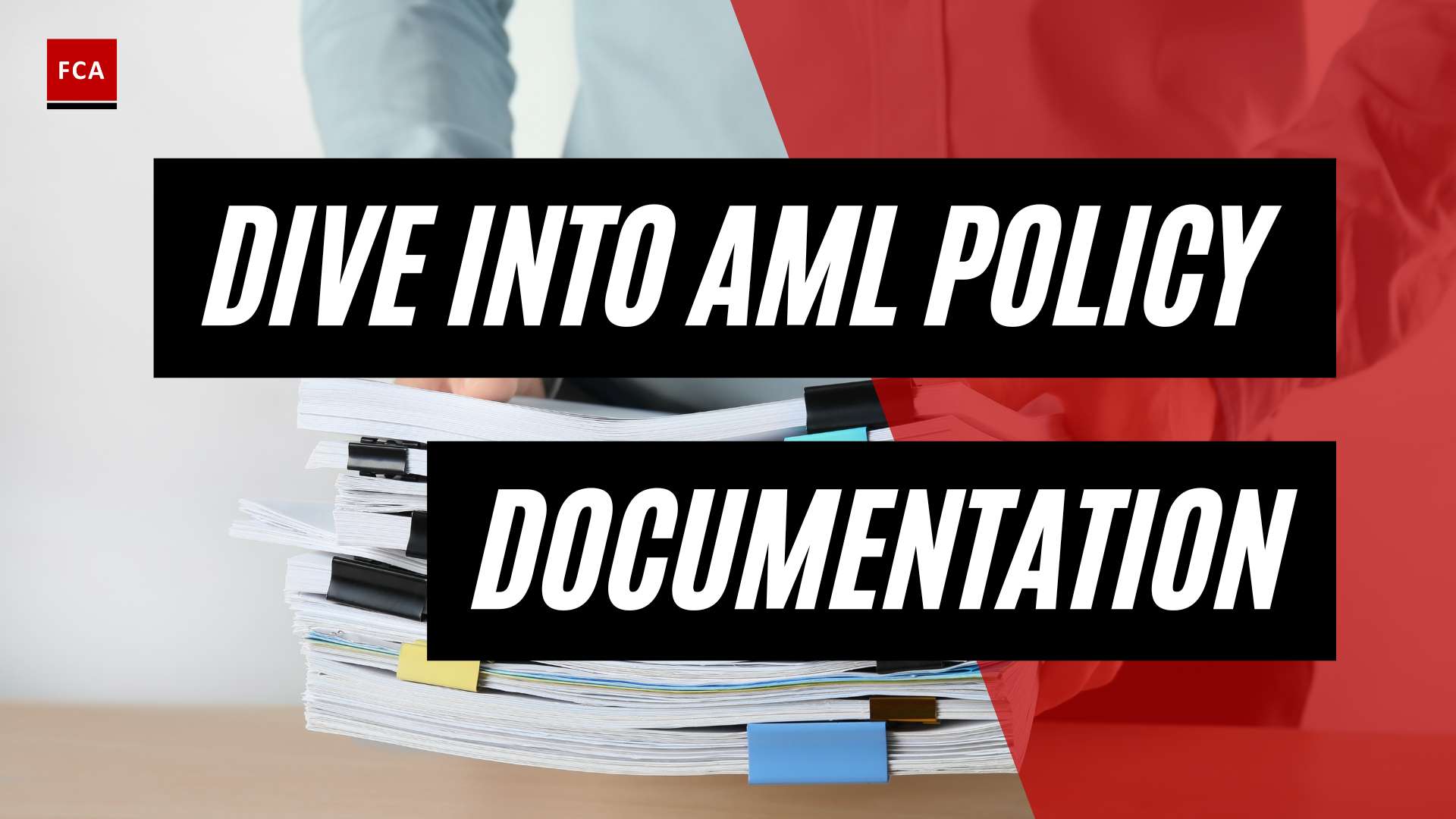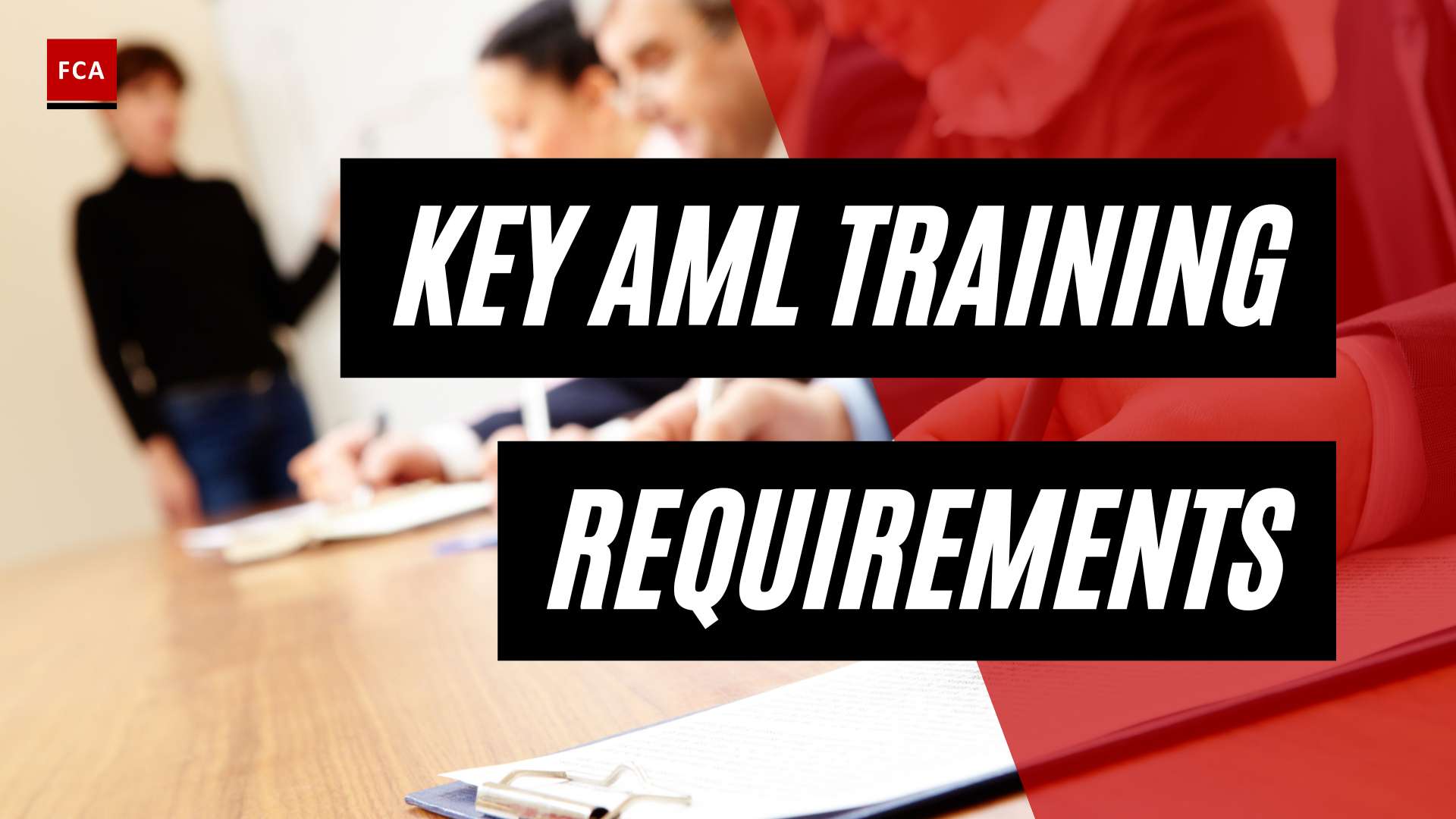Global AML Regulatory Bodies
When it comes to combating money laundering and ensuring global financial integrity, several regulatory bodies play a vital role in establishing and enforcing Anti-Money Laundering (AML) regulations. These bodies work together to create a robust framework and guidelines that financial institutions and professionals must adhere to. Let’s take a closer look at some of the key global AML regulatory bodies.
Financial Action Task Force (FATF)
The Financial Action Task Force (FATF) is an internationally endorsed global standard-setting body that provides a comprehensive framework for combating financial crimes, including money laundering and terrorist financing. Established in 1989, the FATF develops and promotes global AML standards, known as the FATF guidelines, which are recognized and implemented by its member countries.
Financial Crimes Enforcement Network (FinCEN)
In the United States, the Financial Crimes Enforcement Network (FinCEN) is a regulatory body responsible for collecting and analyzing information about financial transactions to combat money laundering, terrorist financing, and other financial crimes. FinCEN plays a crucial role in enforcing AML laws and regulations, ensuring compliance within the U.S. financial system.
Financial Conduct Authority (FCA)
The Financial Conduct Authority (FCA) in the United Kingdom is the regulatory body responsible for overseeing the financial sector and maintaining the integrity of the country’s financial markets. The FCA implements measures to combat money laundering and terrorist financing, ensuring that financial institutions and professionals comply with AML regulations.
Hong Kong Monetary Authority (HKMA)
The Hong Kong Monetary Authority (HKMA) serves as the central banking and regulatory authority in Hong Kong. It works closely with various stakeholders to mitigate money laundering risks, maintain the stability and integrity of the financial system, and enforce AML regulations.
These global AML regulatory bodies, along with others around the world, collaborate to establish a comprehensive and effective AML regulatory framework. It is essential for professionals working in compliance, risk management, anti-money laundering, and anti-financial crime to stay updated with the latest AML regulatory requirements and developments to ensure AML regulatory compliance.
By maintaining a strong regulatory oversight, these bodies aim to protect the global financial system from illicit financial activities and maintain the integrity of the global economy.
AML Regulations in the United States
When it comes to anti-money laundering (AML) regulations, the United States has implemented several key laws to combat money laundering and terrorist financing. Understanding these regulations is crucial for professionals working in compliance, risk management, and anti-financial crime. In the United States, notable AML regulations include the Bank Secrecy Act (BSA), the USA PATRIOT Act, and the Anti-Money Laundering Act of 2020 (AMLA).
Bank Secrecy Act (BSA)
The Bank Secrecy Act (BSA), established in 1970, is one of the most important tools in the fight against money laundering. It requires financial institutions to assist government agencies in detecting and preventing money laundering (FinCEN). The BSA has been enhanced and amended over the years by numerous other laws to provide law enforcement and regulatory agencies with effective tools to combat money laundering.
USA PATRIOT Act
The USA PATRIOT Act, enacted in response to the 9/11 attacks, significantly expanded AML measures in the United States. It requires financial institutions to implement AML programs to prevent money laundering and terrorist financing (Investopedia). The USA PATRIOT Act has been instrumental in enhancing the ability of law enforcement and intelligence agencies to identify and disrupt illicit financial activities.
Anti-Money Laundering Act of 2020 (AMLA)
The Anti-Money Laundering Act of 2020 (AMLA) is the most significant amendment to the Bank Secrecy Act (BSA) since the USA PATRIOT Act. It introduces new anti-money laundering and combatting the financing of terrorism (AML/CFT) measures to strengthen the U.S. AML framework. The AMLA aims to enhance transparency, improve coordination between government agencies, and modernize AML regulations in response to evolving threats.
By familiarizing themselves with the Bank Secrecy Act, the USA PATRIOT Act, and the Anti-Money Laundering Act of 2020, professionals can stay updated on the regulatory requirements and obligations imposed on financial institutions in the United States. Compliance with these AML regulations is essential to prevent money laundering, detect suspicious activities, and protect the integrity of the financial system.
AML Regulations in the European Union
The European Union (EU) has implemented several directives to combat money laundering and enhance anti-money laundering (AML) compliance programs. Let’s explore the Fourth Anti-Money Laundering Directive, the Fifth Anti-Money Laundering Directive (5AMLD), and the Sixth Anti-Money Laundering Directive (6AMLD).
Fourth Anti-Money Laundering Directive
The Fourth Anti-Money Laundering Directive, implemented in 2017, aimed to strengthen AML measures across the EU. It introduced enhanced due diligence requirements, customer identification procedures, and beneficial ownership transparency. The directive also emphasized risk-based assessments and encouraged cooperation and information sharing among EU member states. By implementing these measures, the EU aimed to further safeguard the financial system against money laundering and terrorist financing.
Fifth Anti-Money Laundering Directive (5AMLD)
The Fifth Anti-Money Laundering Directive (5AMLD), implemented on January 10, 2020, built upon the existing AML framework in the EU. This directive introduced new measures to further strengthen the EU’s AML regime. Key provisions of 5AMLD include expanding the scope of AML regulations to include virtual currency exchanges and custodian wallet providers, enhancing beneficial ownership transparency, and improving cooperation and information exchange among EU member states.
Sixth Anti-Money Laundering Directive (6AMLD)
The Sixth Anti-Money Laundering Directive (6AMLD) was implemented on June 3, 2021, to reinforce the EU’s efforts in combating money laundering and the financing of terrorism. 6AMLD introduces additional measures to ensure a more harmonized and effective AML framework across the EU. It focuses on strengthening criminal law provisions and penalties for money laundering offenses, including the inclusion of aiding and abetting, inciting, and attempting money laundering as criminal offenses. 6AMLD also emphasizes the importance of cooperation among law enforcement agencies and enhances the rights of victims of money laundering offenses.
By implementing these directives, the EU aims to enhance its AML regulatory framework and align its practices with international standards and guidelines set by organizations such as the Financial Action Task Force (FATF). These directives play a crucial role in establishing a robust AML regulatory environment within the EU, promoting transparency, and deterring money laundering activities.
For more information on AML laws and regulations, as well as AML regulatory compliance, please refer to our comprehensive guide on AML Regulatory Requirements.
AML Regulations in Other Countries
Anti-money laundering (AML) regulations are implemented worldwide to combat financial crimes and ensure the integrity of the global financial system. Let’s explore the AML regulations in the United Arab Emirates (UAE), Australia, and Singapore.
United Arab Emirates (UAE)
The UAE has been actively working towards strengthening its AML framework. However, in 2022, the country was placed on the Financial Action Task Force (FATF) greylist due to deficiencies in its AML and counter-terrorism financing framework. The UAE faced challenges related to weak beneficial ownership controls and unaddressed terrorism financing issues (Ripjar).
To address these concerns, the UAE is taking steps to enhance its AML legislation and improve its regulatory oversight. It is crucial for businesses operating in the UAE to stay updated with the evolving AML regulations to ensure compliance and mitigate the risk of financial crimes.
Australia
Australia has implemented robust AML and counter-terrorism financing (CFT) regulations to combat money laundering and terrorist financing activities. Financial institutions in Australia are required to implement risk-based AML/CFT solutions in accordance with the Financial Transaction Reports Act 1988 and the Anti-Money Laundering and Counter-Terrorism Financing Act 2006.
These regulations place significant emphasis on customer due diligence, suspicious transaction reporting, and establishing effective AML compliance programs. Financial institutions and designated non-financial businesses and professions (DNFBPs) in Australia must comply with these AML requirements to ensure the integrity of their operations and contribute to the overall efforts against money laundering.
Singapore
Singapore has implemented a risk-based approach to AML and counter-terrorist financing (CFT) measures. The Corruption, Drug Trafficking and Other Serious Crimes (Confiscation of Benefits) Act (CDSA) serves as the primary legislation for AML/CFT in Singapore. In 2020, Singapore expanded its AML regulations further with the implementation of the Payment Services Act (PSA) (Ripjar).
Under the PSA, businesses that provide digital payment token services, domestic and cross-border money transfer services, and merchant acquisition services are required to comply with AML/CFT requirements. The regulatory framework in Singapore emphasizes risk assessment, customer due diligence, and ongoing monitoring to detect and prevent money laundering and terrorist financing activities.
Understanding and complying with the AML regulations in the UAE, Australia, and Singapore are critical for businesses operating in these countries. It is essential to stay informed about any updates or changes to the regulatory landscape to ensure AML regulatory compliance and contribute to the global efforts against money laundering and financial crimes.
Key Components of AML Compliance Programs
To effectively combat money laundering and meet regulatory requirements, financial institutions must establish robust Anti-Money Laundering (AML) compliance programs. These programs consist of several key components, including policies and procedures, independent audits, and AML training.
Policies and Procedures
Comprehensive policies and procedures form the foundation of an effective AML compliance program. These documents outline the steps and guidelines that financial institutions must follow to identify and prevent money laundering activities. The policies and procedures should cover all AML compliance issues and ensure that employees at all levels understand their roles and responsibilities within the system (Flagright).
Financial institutions should establish clear protocols for customer due diligence, know-your-customer (KYC) requirements, and suspicious activity reporting. These policies and procedures should be regularly reviewed and updated to align with evolving AML laws and regulations and reflect changes in the institution’s risk profile.
Independent Audits
Independent audits by third-party organizations are a crucial component of an effective AML compliance program. These audits assess the institution’s adherence to regulatory requirements and evaluate the effectiveness of its internal controls and processes. Testing is typically mandated every 12 to 18 months, with more frequent audits in high-risk areas (Flagright).
The independent audit process provides an objective assessment of the institution’s AML compliance efforts. It helps identify any weaknesses or gaps in the program and enables the institution to take corrective actions to strengthen its AML controls and mitigate potential risks.
AML Training
AML training is an essential component of an effective AML compliance program. It ensures that employees within financial institutions are knowledgeable about AML laws, regulations, and best practices. Training programs should cover a range of topics, including the identification of red flags for money laundering, suspicious activity reporting, and customer due diligence.
Different employees may require varying levels of training based on their specific AML responsibilities. For example, frontline staff who interact directly with customers should receive comprehensive training on detecting and reporting suspicious transactions, while employees in senior management positions may need more targeted training on AML regulatory requirements and oversight (Flagright).
Regular and ongoing AML training ensures that employees remain up to date with the latest regulatory developments and industry trends. It reinforces the importance of AML compliance and helps foster a culture of vigilance within the institution.
By implementing comprehensive policies and procedures, conducting independent audits, and providing thorough AML training, financial institutions can establish robust AML compliance programs. These programs play a vital role in preventing money laundering activities and ensuring compliance with AML regulatory requirements.
Consequences of Non-Compliance
Ensuring compliance with Anti-Money Laundering (AML) regulations is of utmost importance for financial institutions and businesses alike. Failing to comply with these regulations can have severe consequences, including penalties, fines, and reputational damage. In this section, we will explore the potential consequences of non-compliance with AML regulations.
Penalties and Fines
Non-compliance with AML regulations can result in significant penalties and fines for financial institutions. The exact penalties and fines vary depending on the jurisdiction and the specific regulations violated. For example, in Canada, failure to comply with Parts 1 and 1.1 of the Proceeds of Crime (Money Laundering) and Terrorist Financing Act may result in criminal charges for non-compliance offences or administrative monetary penalties (AMPs) (FINTRAC). AMPs are monetary penalties issued by the Financial Transactions and Reports Analysis Centre of Canada (FINTRAC) to reporting entities that are in non-compliance with AML regulations. These penalties can be substantial and are made public by FINTRAC (FINTRAC).
Similarly, other jurisdictions have their own penalties and fines for non-compliance with AML regulations. It is crucial for financial institutions and businesses to understand and adhere to the specific regulatory requirements in their respective jurisdictions to avoid such penalties and fines. Regular updates on AML regulatory requirements and AML regulatory compliance are essential to stay informed about any changes in the regulatory landscape.
Reputational Damage
In addition to monetary consequences, non-compliance with AML regulations can cause severe reputational damage to financial institutions and businesses. Money laundering and terrorist financing are serious crimes that pose significant risks to the integrity of the financial system. If an institution is found to be non-compliant, it can result in a loss of trust and confidence from clients, investors, and the general public.
The negative publicity associated with non-compliance can tarnish the reputation of an institution, making it challenging to attract new clients and maintain existing relationships. Rebuilding trust and repairing a damaged reputation can be a lengthy and costly process. Therefore, it is crucial for financial institutions to prioritize AML compliance and implement robust AML training programs to ensure that employees understand their responsibilities and the potential consequences of non-compliance.
In conclusion, non-compliance with AML regulations can have significant consequences for financial institutions and businesses. Penalties, fines, and reputational damage are just a few of the potential outcomes. To mitigate these risks, organizations must prioritize compliance, stay up to date with AML regulatory updates, and implement comprehensive AML compliance programs that include policies and procedures, independent audits, and regular AML training for employees. By doing so, institutions can protect themselves, their clients, and the integrity of the financial system.
Future of AML Compliance
As the landscape of financial crimes continues to evolve, the future of Anti-Money Laundering (AML) compliance is expected to be shaped by advancements in technology. The use of technology holds great promise for improving the efficiency and effectiveness of AML programs, but it also brings new challenges and risks that need to be addressed.
Use of Technology
The future of AML compliance involves harnessing the power of technology to enhance the identification and detection of suspicious transactions and financial crimes. One significant area of advancement is the use of artificial intelligence (AI) and machine learning (ML) algorithms to analyze vast amounts of data and identify patterns that may indicate money laundering or other illicit activities. By automating these processes, financial institutions can streamline their AML programs and reduce the manual effort required for transaction monitoring.
Another technology that is expected to play a role in the future of AML compliance is blockchain. The decentralized and immutable nature of blockchain technology can provide enhanced transparency and traceability, making it more difficult for criminals to hide their illicit activities. Blockchain can also enable secure and efficient information sharing among financial institutions, improving the overall effectiveness of AML efforts.
Challenges and Risks
While the use of technology brings significant benefits to AML compliance, it also presents new challenges and risks that need to be addressed. One of the key challenges is the need for advanced data analytics capabilities. As criminals become more sophisticated in their money laundering techniques, AML programs must keep pace by leveraging advanced analytics tools to detect and prevent these activities. This requires investment in skilled personnel and robust infrastructure.
Another challenge is the need for robust cybersecurity measures. As financial institutions adopt new technologies, they become potential targets for cybercriminals. Safeguarding sensitive customer data and protecting against cyber threats is crucial to maintain the integrity of AML programs.
Additionally, AML compliance professionals must stay up-to-date with the evolving regulatory landscape. As technology evolves, so do the techniques used by money launderers. AML regulations need to adapt to these changes to effectively combat financial crimes. This requires ongoing monitoring of AML regulatory updates and proactive adjustments to compliance programs.
In conclusion, the future of AML compliance lies in the effective use of technology. The integration of AI, ML, blockchain, and other advanced technologies can greatly enhance the efficiency and effectiveness of AML programs. However, financial institutions must also address the challenges and risks associated with these technologies, including the need for advanced data analytics capabilities, robust cybersecurity measures, and keeping up with evolving regulatory requirements. By staying informed and embracing technological advancements, AML compliance professionals can better navigate the complex landscape of financial crimes.








